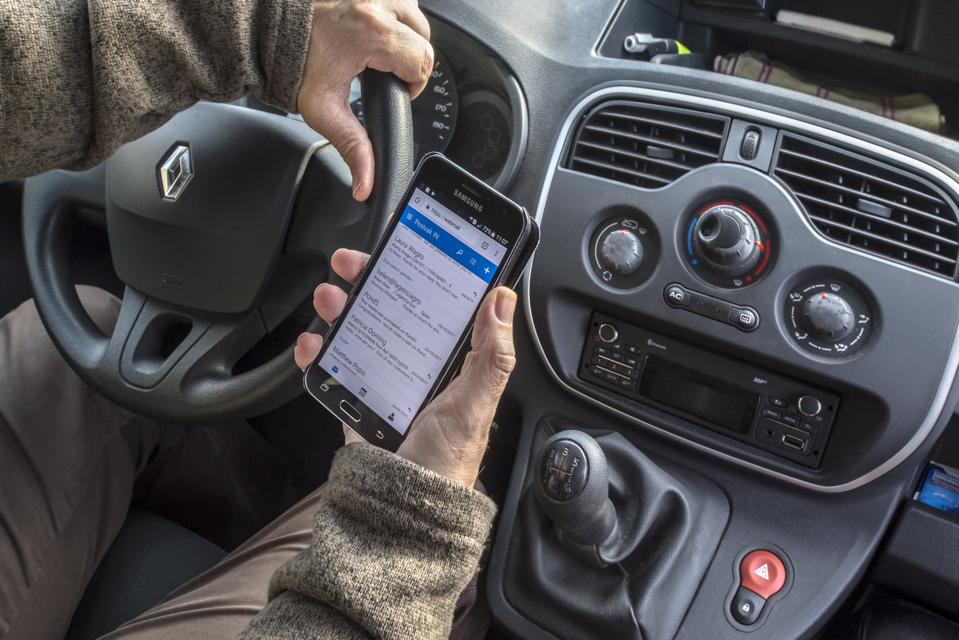Most smartphones have a “do not disturb” feature that can block or limit driver distraction when it is activated, but the technology designed to help stop this risky behavior is not widely used. Only a small percentage of drivers engage it behind the wheel and often only on a subset of their trips.
Those are the main take-a-ways of new research released on Tuesday by the AAA Foundation for Traffic Safety, a nonprofit research and education association, that examined the effectiveness of smartphone-blocking tech to curb driver distraction.
“Distracted driving continues to be a major traffic safety concern,” David Yang, president and executive director of the AAA Foundation, said in a statement. “Despite their potential to reduce distraction, smartphone technology-based countermeasures are not widely used by drivers. This study aimed to uncover how to encourage more people to use such features to stay focused on the driving task and improve safety.”
In a recent year, 3,275 people died and another 324,819 were injured in distraction-related crashes, according to the National Highway Traffic Safety Administration [NHTSA]
, though that number is believed to be higher.
Despite texting bans in almost all 50 states – Montana still allows drivers to text – distraction is a prevalent problem among drivers, especially younger ones, researchers said.
For the study, “Increasing the Use of Smartphone-Limiting Technology to Combat Distracted Driving” researchers looked at why drivers avoid using “do not disturb” features and addressed how to change their behaviors.
Some highlights about about “do not disturb” tech from the study:
- Limited access to music and navigation systems were reasons drivers did not activate the feature, reflecting a lack of understanding of how it works. But, in fact, smartphone-blocking features do allow music and navigation to be used when activated, researchers said.
- Some drivers indicated that they didn’t employ the tech because they didn’t realize it was available or forgot to turn it on.
- The fear of missing out (FOMO ), like missing an important call or text while driving, was cited as a reason for not using the feature.
- Many drivers said they liked “do not disturb” features that automatically turn on during stressful situations, like heavy rain, snow, or traffic, suggesting that drivers are more inclined to use this feature to reduce distraction when there are greater demands on their attention.
- Improved accuracy in recognizing when a user is not a driver and insurance discounts were among the factors mentioned that would influence greater use.
- Younger drivers (age 18 – 24) — a group more likely to use their phones when behind the wheel – are more knowledgeable about “do not disturb” features than older generations, but they tend to believe they can use their phone safely while driving, so they feel these features may not be necessary.
Young drivers were monitored for 10 weeks to see if training and education could improve awareness and understanding, and lead to increased usage. (The “do not disturb” feature was set to turn on automatically when driving was detected, and participants were told to keep this setting on for the remainder of the study, researchers noted.)
Before training, 50% of participants did not know their phone had a “do not disturb” feature; 85% reported not knowing how to use it; and 65% did not know it could be set to turn on automatically when driving was detected.
After training, 100% of the participants said they knew their phone had a “do not disturb” feature, knew how to use it, and that it could be set to turn on automatically; there was a 41% decrease in smartphone interactions; and 6% were less likely to pick up their phone.
“We’ve all witnessed how smartphones can lead to distraction and risky driving,” Jake Nelson, director of traffic safety advocacy & research for AAA, said in a statement, “but it’s possible these devices could help us to prevent it.”
To encourage greater use of “do not disturb” features while driving, the AAA issued a series of recommendations, including: increase awareness and education through public education campaigns, driver training and licensing programs, improve the technology for automatic activation and recognition when the user is a passenger rather than a driver, and more use of reminders and incentives.
To read the full report, click here.

